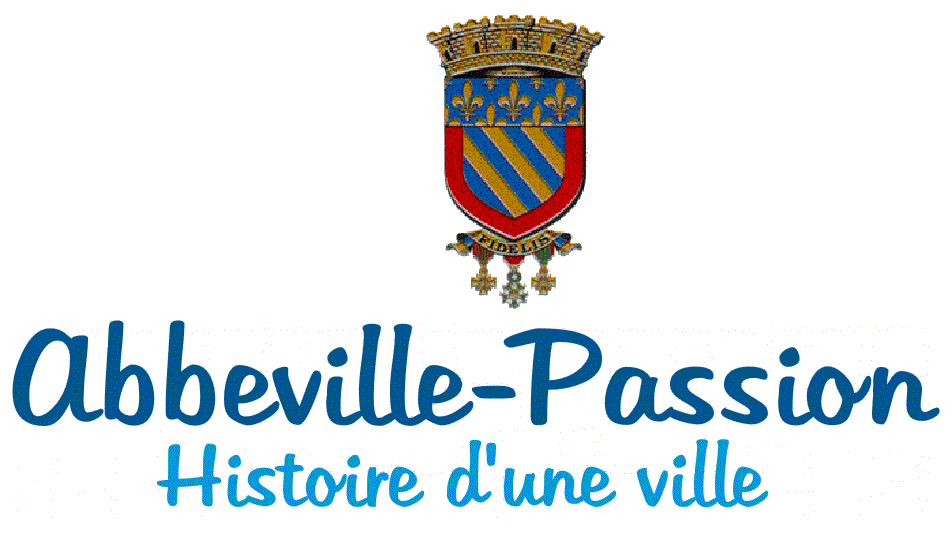-

 Monuments
Monuments- • L'hôtel de l'Alhambra
- • Monument La Barre
- • The "Baths and Shower"
- • The Bourdois or Small Echevinage
- • The Carmel
- • The Charterhouse of Thuyson
- • The Municipal Theatre
- • The bridge of the Six Moulins
- • The château de Bagatelle
- • The manufactures des Rames
- • The naked woman
- • The so-called new house "Van Robais"
- • The train station
- • The Battle Abbeville
- • The liberation of Abbeville
-

 Personalities inhabitant of Abbeville
Personalities inhabitant of Abbeville- • Albert Laurent, Musician and literary
- • André Maurois
- • Ernest Prarond
- • Father Pierre Carpentier
- • François-Jean Lefebvre, Chevalier de La Barre
- • Henri Caron, painter of the Bay of Somme
- • Jacques Boucher de Crèvecoeur de Perthes
- • Jean-François Lesueur
- • Max Lejeune and the reconstruction of Abbeville
- • Pierre François Guerlain
- • Roger Agache
- • Rose Bertin
- • The Admiral Courbet
- • Van Robais
-

 Sports
Sports- • SCA
1415097 visitors
4 visitors online
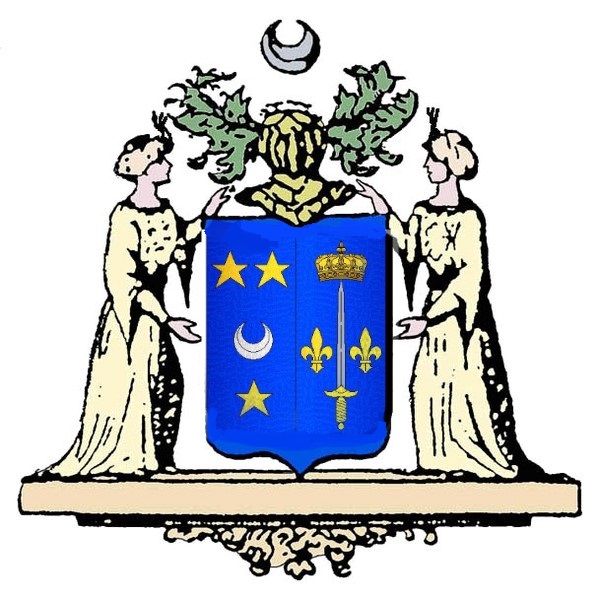
"From the Château de Crèvecoeur to the customs of Abbeville "
Jules-Armand Guillaume Boucher de Crèvecoeur, born July 27, 1757 in Paray le Monial, comes from a noble Champagne line dating back to the Crusades. Like any nobleman, he should be destined to be a warrior, but instead he chose to be a collector, naturalist and Customs official.
Marie de Perthes was born in Crépy en Valois, she is the only daughter of Jean-Charles de Perthes, adviser to King and lawyer in the finance office of Soissons. She is a distant descendant of Marguerite Romée, cousin of Joan of Arc.
From their union in 1787 will be born seven children.
The first is called Jacques, he was born on 10 September 1788 in Rethel.
The Revolution broke out and Jules-Armand Guillaume lost part of his fortune and titles, he retired to the chateau of Crèvecoeur, the home of his ancestors, and became the simple and modest citizen Boucher. It was then that he was proposed to be a steward of the Customs at Abbeville. The little Jacques is then 4 years old when he comes to settle in the capital of Ponthieu. Frightened by the upheavals of the Revolution, the words of scaffold and guillotine, he later refused the patronymic of Crèvecoeur to adopt his mother's surname, it was decided: he would be called Jacques Boucher de Perthes.
A very bad student with disastrous results, his father retired him from the pension at 14 years and destined it to the customs. Self-taught, he learned music, theater, poetry especially in Italy or Napoleon himself in charge of a customs mission. It is with the uniform of lieutenant of the customs that it leaves to Genoa to contribute to the organization of the continental blockade. We are in 1805, he is not even 20 years old.
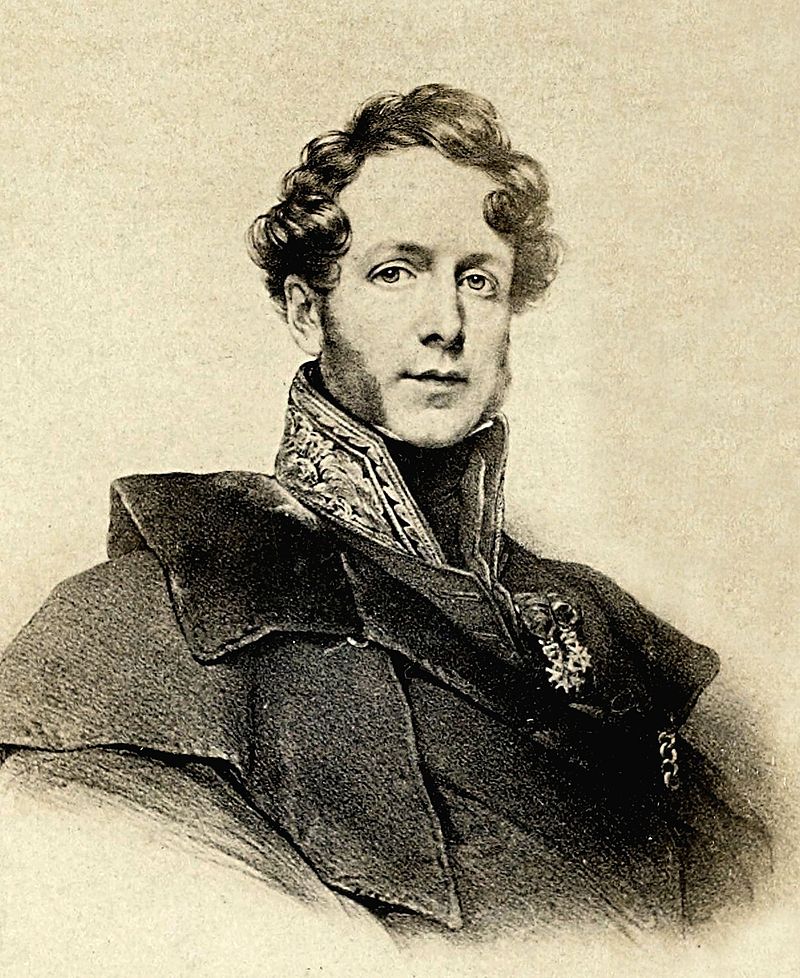
In 1811, 6 years later, Boucher de Perthes was recalled to France and became head of the staff of the General Directorate of Customs.
In 1813, the decline of imperial grandeur, the collapse of the Empire, Paris capitulated and Louis XVIII became King of France. He was criticized for his Bonapartism and his support for the Empire. It must be said that, thanks to Napoleon, he had the opportunity to touch many fields and especially to become the lover of the Princess Pauline Borghese, the sister of this latest. He was therefore summoned to work in the Province and no longer in Paris, he was sent to La Ciotat and then to Morlaix in 1816.
From sentimental setbacks to sentimental setbacks, disillusioned by his tumultuous youth between princesses and marquises, he never finds a woman with whom to found a home and plunges into writing. In April 1825, Boucher de Perthes was finally appointed to the customs department of Abbeville. He returned there on 12 June 1825, after 20 years of absence as a successor to his father.
A complete writer
From the pamphlet to the chansonnette, from tragedy to the treatise on metaphysics, novels, satires, tales, travel stories, memoirs, Boucher de Perthes proves to be very complete in writing. We shall especially remember Celtic and Antediluvian Antiquities in three volumes (1849-1857-1864), "The Antediluvian Man and His Works" (1860) and "The Jaw of Moulin-Quignon" (1864).
Casimir PICARD
It was at the Abbeville Emulation Society that Boucher de Perthes met Casimir Picard, born in Amiens on December 16, 1806, a physician with a passion for natural science and botany, who became a member of the SEA while Boucher De Perthes was its vice-president. The two men formed a deep friendship and founded the Abbeville and Ponthieu Museums, where all the artifacts of natural history and antiquities collected in the department were assembled.
Casimir Picard becomes archivist of the society in 1837 but unfortunately, suffering from phthisis, he died on March 13, 1841 at the age of 34 years. However, during his young life, he made some essential discoveries of what would later become "PREHISTORY", in particular:
- The fitting of the Celtic axes,
- The discovery of the cut stone,
- The techniques of debitage,
- The foundations of archaeogeology.
In the grief of mourning, Boucher de Perthes decided to continue the researches of his collaborator and friend, which led him to formally found prehistory as a science.
The first discoveries
The first real research of Boucher de Perthes began in the summer of 1837 at the ramparts of the Portelette. But already in 1832, during the earthworks to put the transit canal in operation, under the ramparts from the Porte d'Hocquet to the Porte de Rouen, two Celtic axes were discovered, two polished axes with their horn sheath deer. As well as a sheath of cervid wood found near Saint Jean des Prés. But these excavations were not followed.
The excavations at Portelette mark the beginning of the great collection of Boucher de Perthes. From there, a whole series of discoveries will follow: tools of stone, pottery, bones, remains of wild boar, aurochs, horse, human skull, burials ...
Encouraged, Boucher de Perthes then tackles other excavations on Menchecourt where a number of neolithic flint axes have been created.
We are now in 1844, Boucher de Perthes has already sounded the faubourg Saint-Gilles and the mill Quignon. He then tackles a deposit located behind the hospital called the "hospital bench" (that at that time the hospital was named the establishment that later became the General Hospice Dumont) . This deposit brings to light a "broken" ax, a biface of yellowish patina whose breaking is obviously ancient and different from the Celtic axes found until then, as well as an elephant molar ...
The discoveries of Boucher de Perthes will be very often decried or recognized as false or erroneous. Would he have been carried away by passion? The fact remains that many of the cut flints prove to be of recent development and not dating back to a distant period. Among them, the jaw of the "mill Quignon" and its trial in 1863. It turns out that this famous jaw was a false, worked by his quarry in exchange for the sum of 200 Frs.
That said, a discovery in the Dordogne in 1864 of a mammoth engraved in an ivory defense by prehistoric men and the discovery of elephant bones at the level of the rock of Solutre in 1866 will then awaken the interest of research Of Boucher de Perthes and the importance of his work shortly before his death.
It was at the Chepy hotel, its Abbeville mansion, that the maximum of its collection was stored: prehistoric objects, earthenware paintings, antique furniture ... And in 1834, the museum of Abbeville and Ponthieu was founded In collaboration with Casimir Picard.
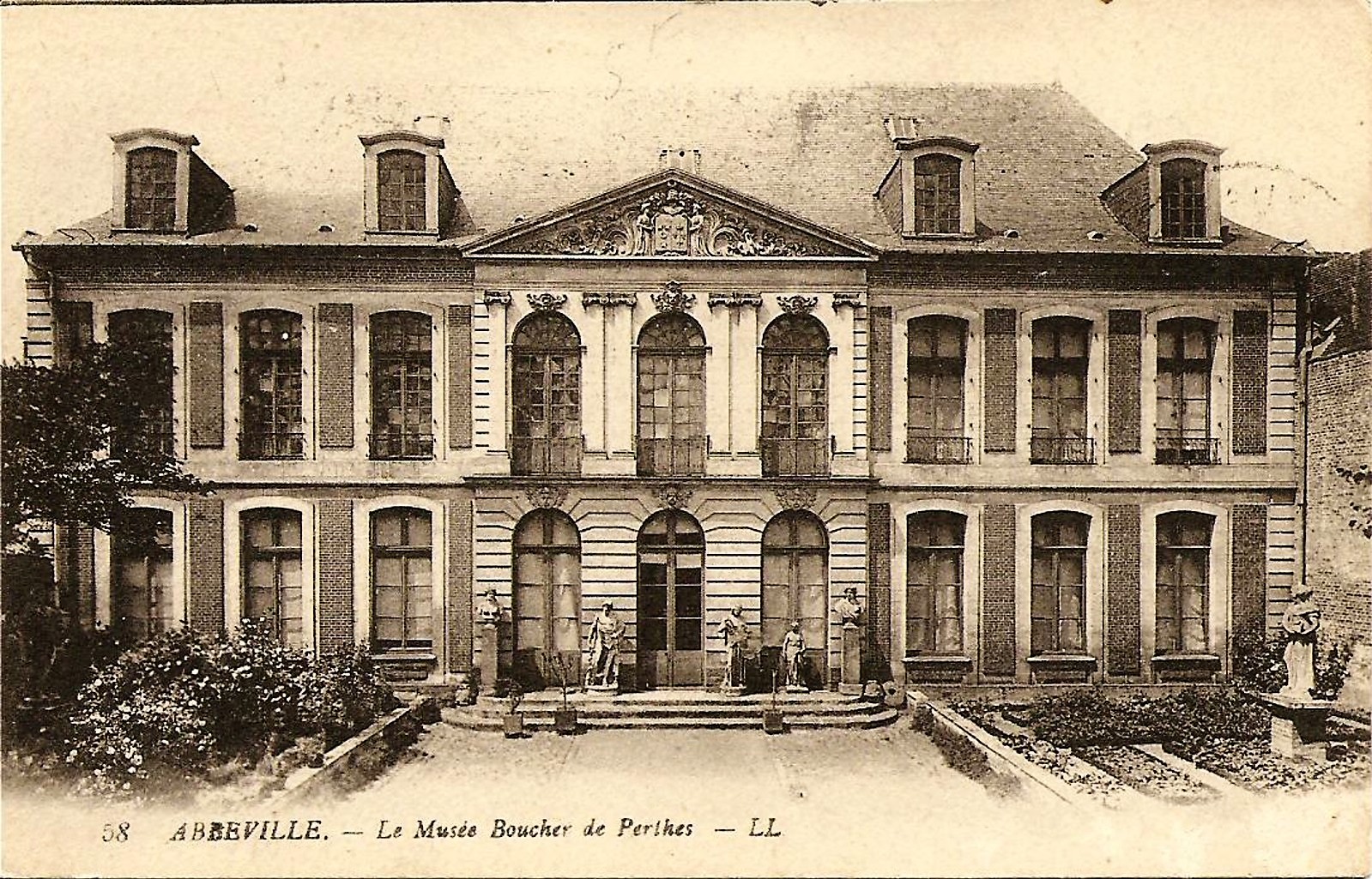
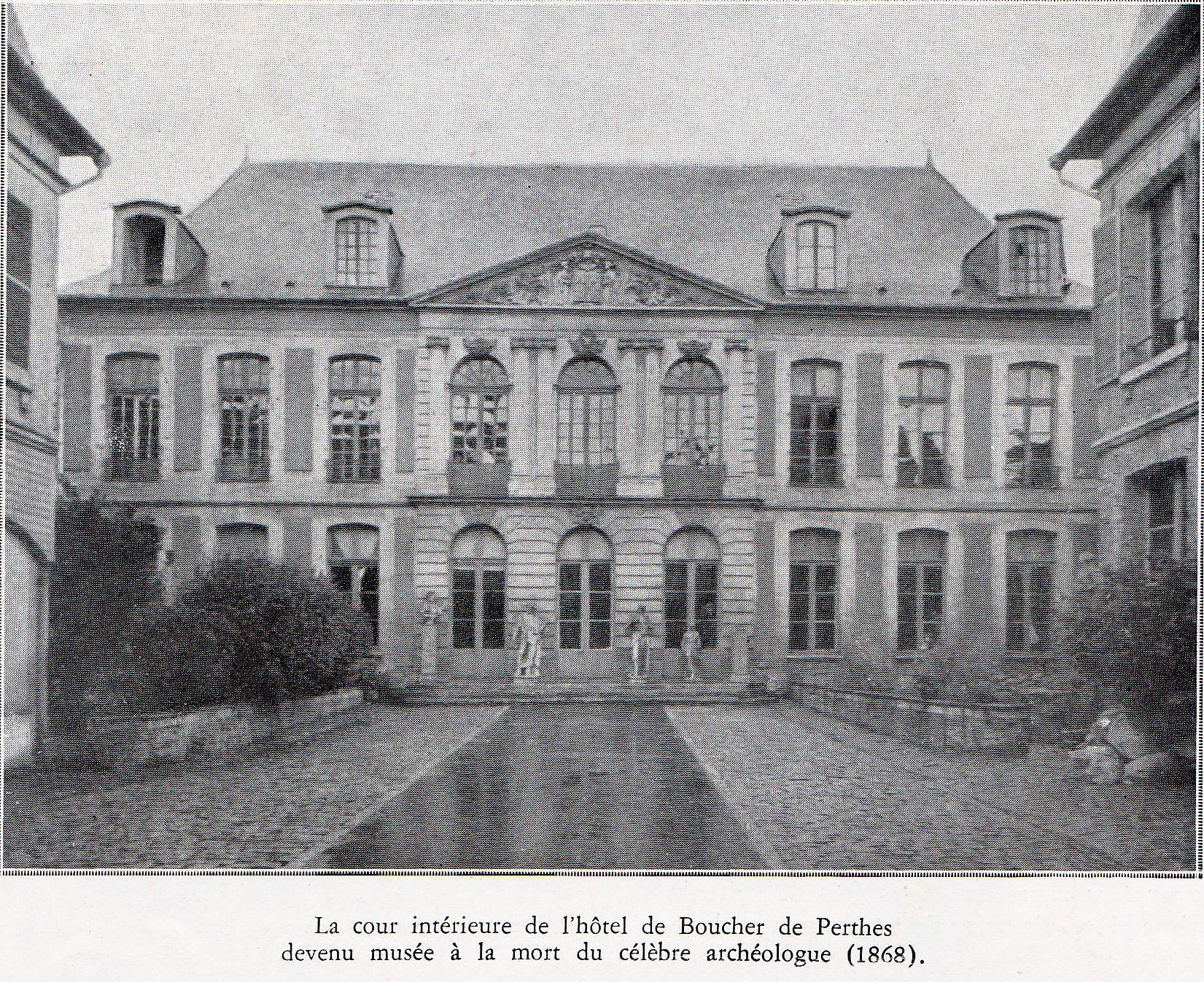
"But on May 20, 1940, Rommel and his tanks, to cross the Somme in a flash offensive, hammered the city before finishing their work by burning it, the old hotels of the old city were crumbled, the Boucher museum Of Perthes and the statue of the scientist, who was in the Piazza del Pilori, were completely destroyed. " (From Jacques Boucher of Perthes)
In the Rue Boucher de Perthes, on the morning of May 21, 1940, the museum burned down, in two days everything was calcined, the 6,000 flintstones extracted from the surrounding quarries were reduced to rubble and mixed with the rubble.
The end of his life and his monument.
When finally recognized as one of the most famous prehistorians, the end of his life is very close. He writes a will passing his collections to different museums and his house, his furniture to the city of Abbeville. He also wrote that he wanted to be buried in the cemetery of La Chapelle in Abbeville, paying the sum of 10,000 francs in order to raise a funerary monument "simple but durable". This one is the work of the sculptor Nadaud and lets appear on its base the arms of his family and engraved in the stone the titles of his works.
On June 7, 1908, the SEA pays homage to him by having a statue erected in his memory place of the pillory. Unfortunately, this one was abducted by the Germans in 1942, in order to melt, as well as other abbevilloise statues.
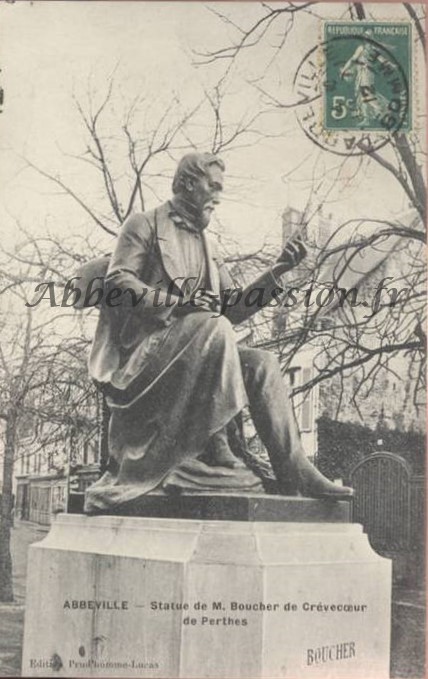
Category : - Personalities inhabitant of Abbeville
Page read 19804 times
Copyright
Images and texts are not royalty-free.
If you want to use one of the photos or texts on the site, do not hesitate to contact us and explain how you intend to use them.

